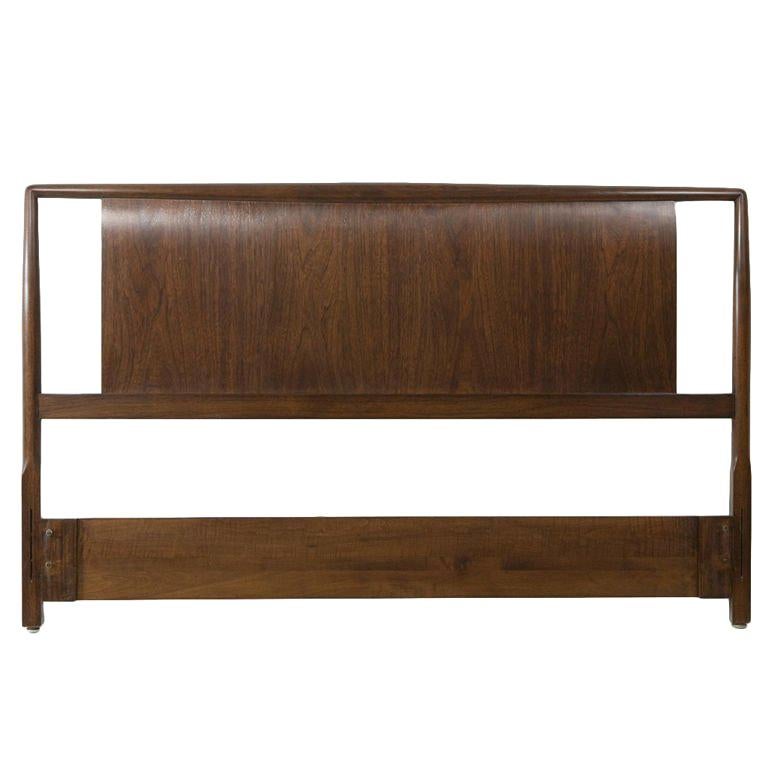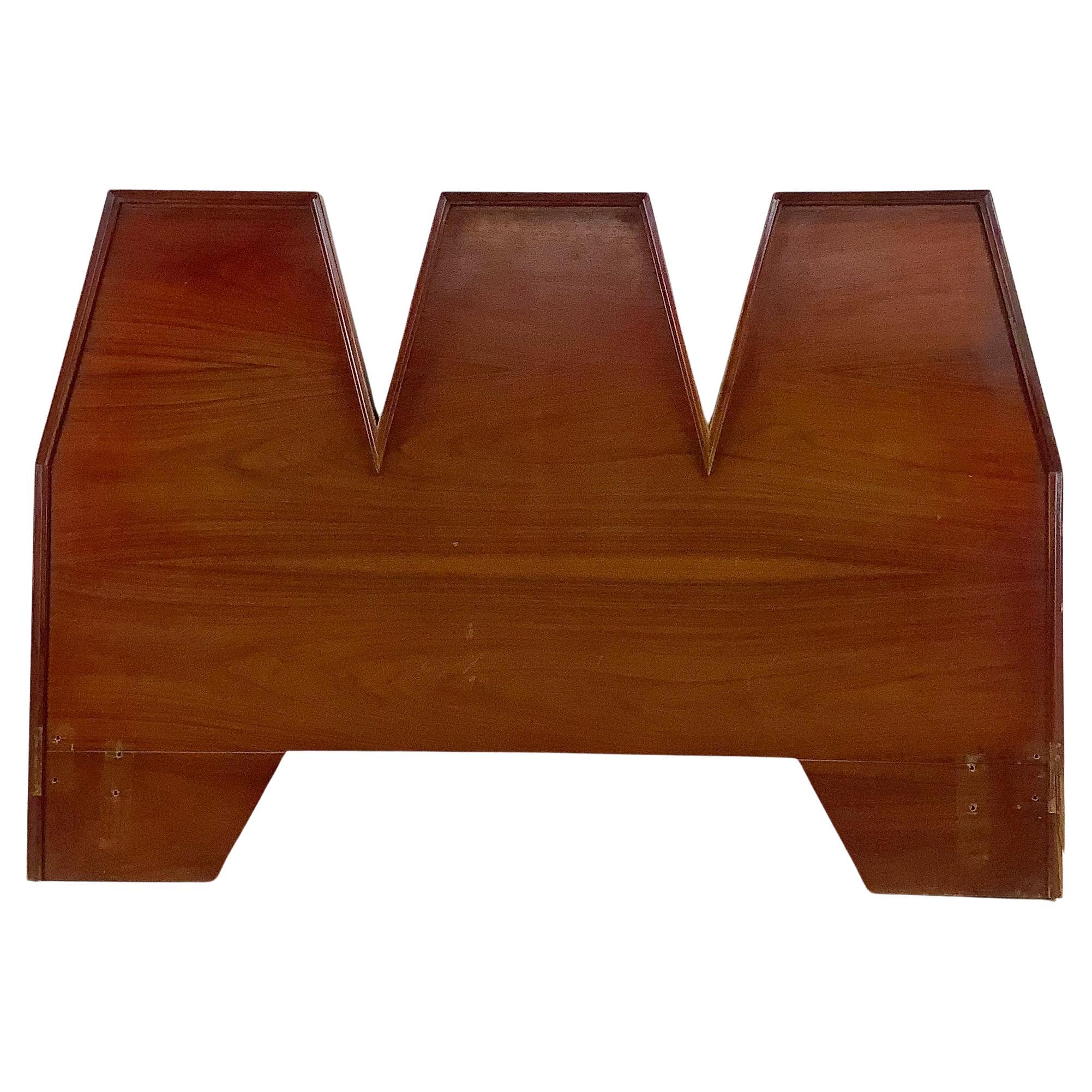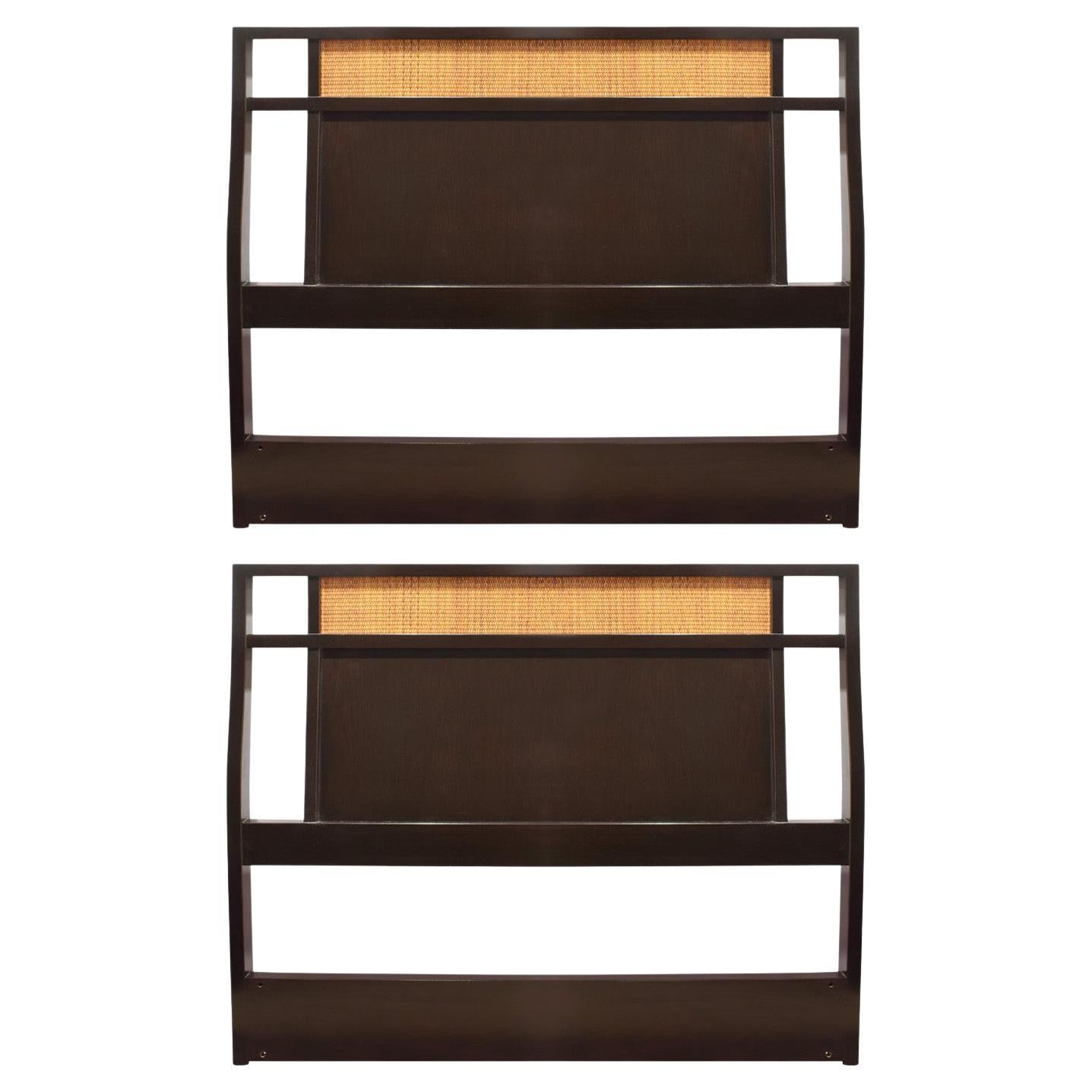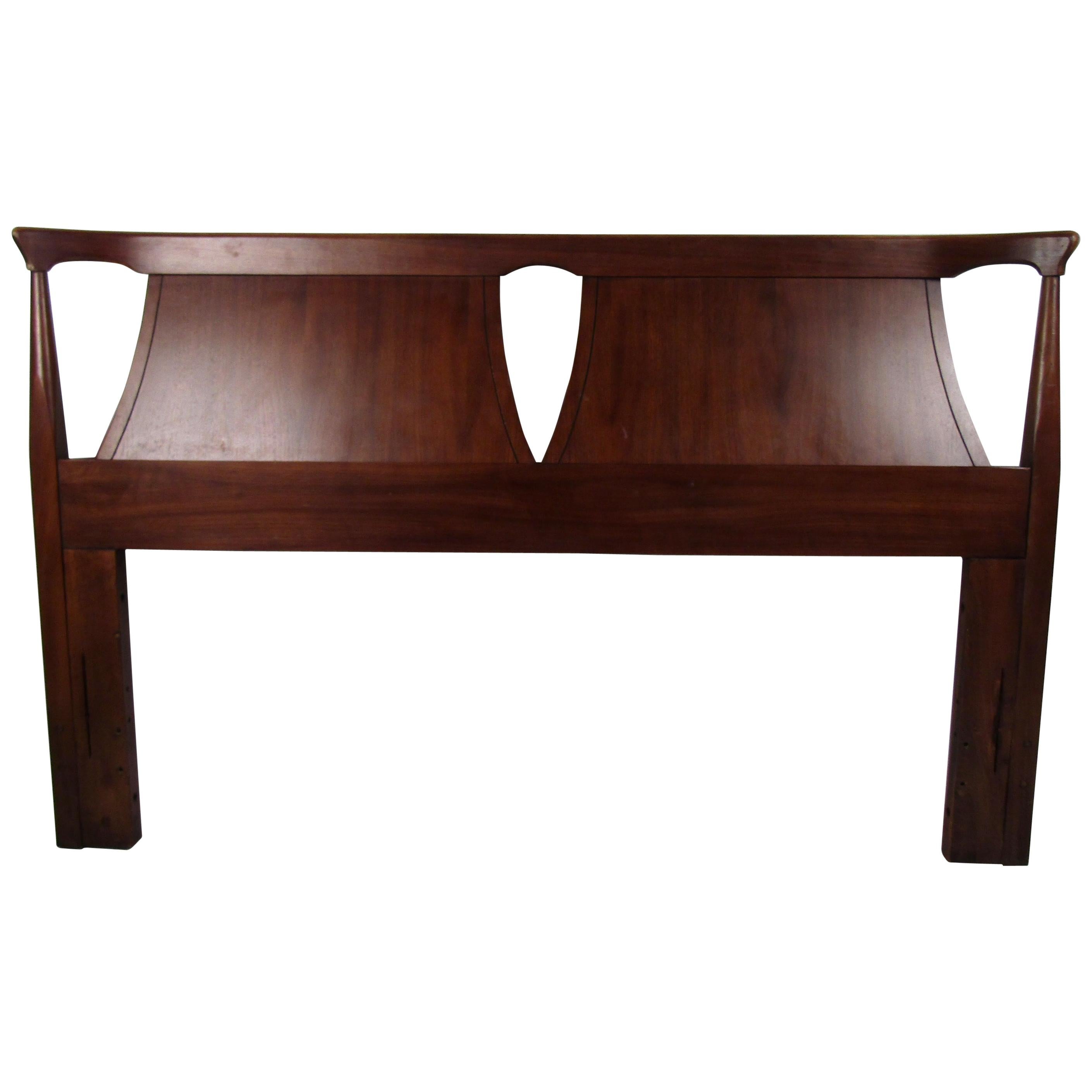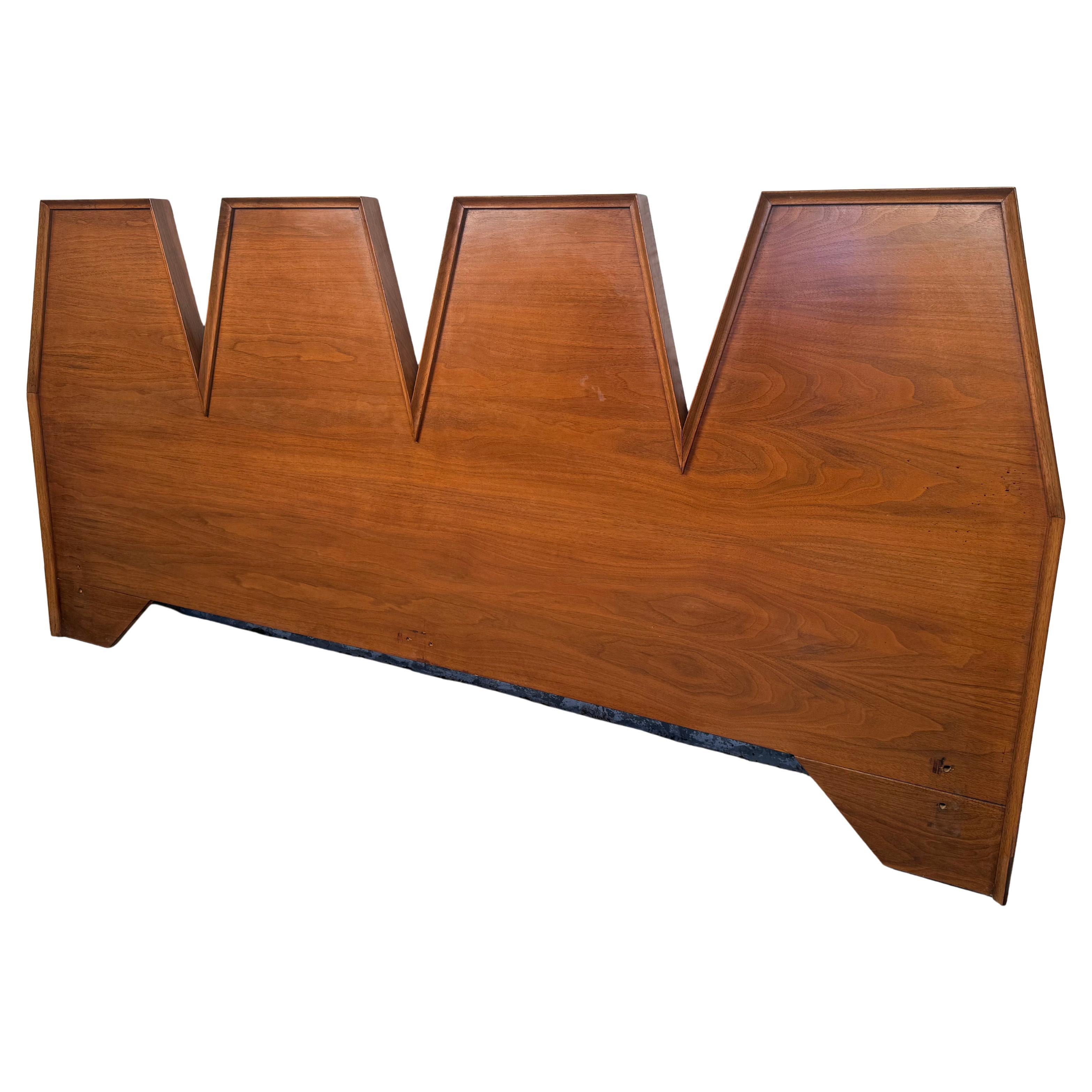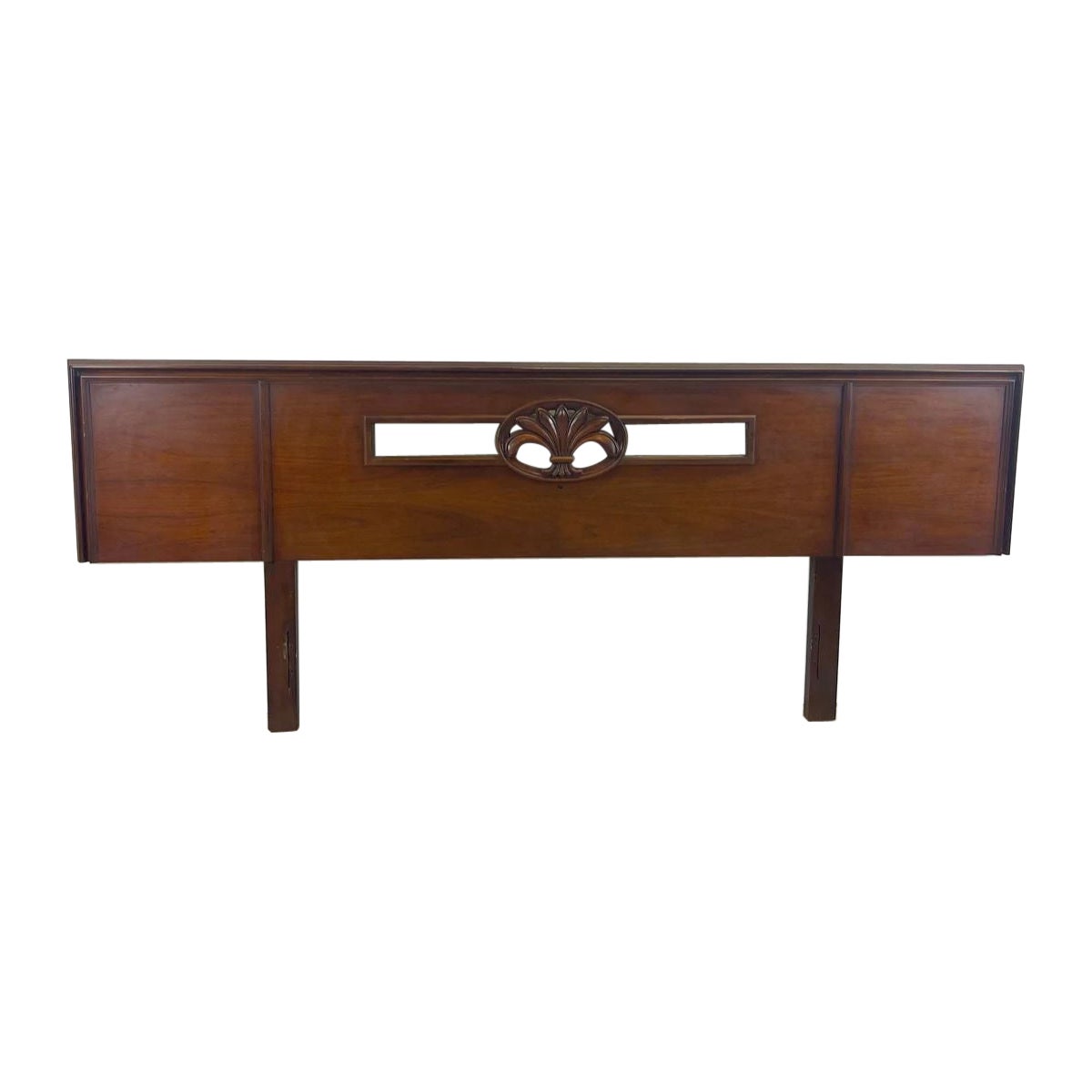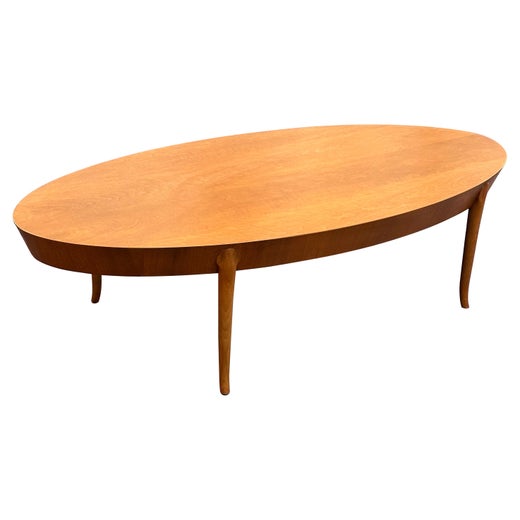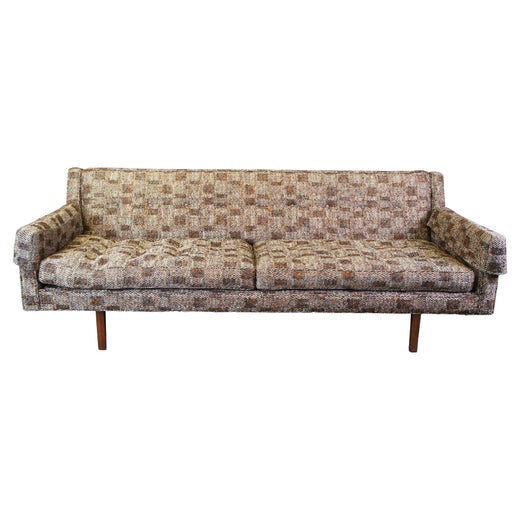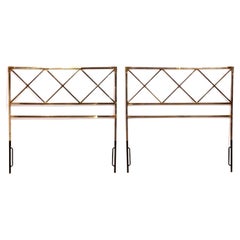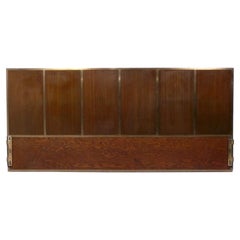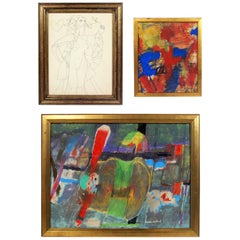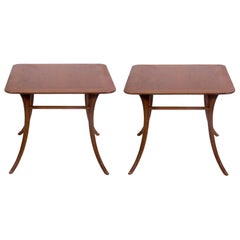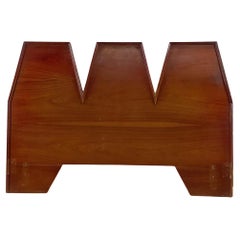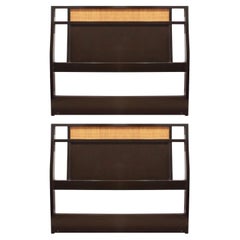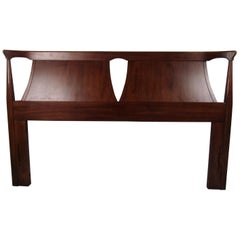Selection of Modern Headboards
About the Item
- Creator:T.H. Robsjohn-Gibbings (Designer),Edward Wormley (Designer)
- Dimensions:Height: 36.5 in (92.71 cm)Width: 80 in (203.2 cm)Depth: 2.5 in (6.35 cm)
- Style:Mid-Century Modern (Of the Period)
- Materials and Techniques:
- Place of Origin:
- Period:
- Date of Manufacture:1950's
- Condition:Wear consistent with age and use. Very good condition. These pieces are currently being refinished, and the price noted below INCLUDES refinishing in your choice of color.
- Seller Location:Atlanta, GA
- Reference Number:1stDibs: LU87182944532
T.H. Robsjohn-Gibbings
British-born designer, interior decorator and author T.H. Robsjohn-Gibbings was one of the great American tastemakers in the middle decades of the 20th century. Much like Edward Wormley, Robsjohn-Gibbings was a design classicist by education and inclination, but he would come to create some of the most gracious and livable modern furnishings of the era.
Robsjohn-Gibbings studied architecture at the University of London, then held various jobs that included designing décors for passenger liners and working as the art director of a film studio. In the early 1930s, while employed by the upper-crust interior designer Charles J. Duveen, Robsjohn-Gibbings experienced an epiphany during a visit to the British Museum.
Examining the furniture depicted on ancient Greek ceramics — lithe stools and klismos chairs — he realized that he had found a design touchstone. By 1936, Robsjohn-Gibbings had moved to New York and set up a showroom on Madison Avenue for his modern reinterpretations of Classical Greek designs. Aided by contacts he’d developed while working with Duveen, he quickly established a clientele that included Elizabeth Arden, Doris Duke and Thelma Chrysler Foy.
Through his writings for magazines and books, Robsjohn-Gibbings earned a public following and was established as an urbane arbiter of taste. From 1943 to 1956, he produced an understated line of modernist furnishings for Widdicomb, which included one of the icons of the period: the tiered, biomorphic Mesa coffee table (1951). Robsjohn-Gibbings moved to Athens, Greece, in 1966, and created a new line of antiquity-inspired pieces for the firm Saridis. The series turned out to be his swan song.
Collectors’ interest in Robsjohn-Gibbings was reignited in the 1980s when the 200-plus pieces from his 1936–38 commission for the Bel-Air estate of Los Angeles socialite Hilda Boldt Weber — pared-down neoclassical pieces rendered in blond wood (with the occasional flourish) — came on the market. (Up until then, the collection had remained in the house, despite its having changed hands several times.)
But his work for Widdicomb remains his most widely known, appreciated for its elegance and generous proportions. Robsjohn-Gibbings despised the stern aesthetic associated with his Bauhaus contemporaries, and a keynote of his modernist pieces is that they have no sharp angles. His chair and sofa frames, table legs and even many cabinets feature softly contoured edges. In whatever style he designed, Robsjohn-Gibbings was guided by simplicity and timelessness. He wanted his furniture to be lived with happily.
Find antique T.H. Robsjohn-Gibbings coffee tables, dining tables, credenzas and other furniture on 1stDibs.
Edward Wormley
As the longtime director of design for the Dunbar furniture company, Edward Wormley was, along with such peers as George Nelson at Herman Miller Inc., and Florence Knoll of Knoll Inc., one of the leading forces in bringing modern design into American homes in the mid-20th century. Not an axiomatic modernist, Wormley deeply appreciated traditional design, and consequently his vintage seating, storage cabinets, bar carts and other work has an understated warmth and a timeless quality that sets it apart from other furnishings of the era.
Wormley was born in rural Illinois and as a teenager took correspondence courses from the New York School of Interior Design. He later attended the Art Institute of Chicago but ran out of money for tuition before he could graduate. Marshall Field hired Wormley in 1930 to design a line of reproduction 18th-century English furniture; the following year he was hired by the Indiana-based Dunbar, where he quickly distinguished himself. It was a good match.
Dunbar was an unusual firm: it did not use automated production systems; its pieces were mostly hand-constructed. For his part, Wormley did not use metal as a major component of furniture; he liked craft elements such as caned seatbacks, tambour drawers, or the woven-wood cabinet fronts seen on his Model 5666 sideboard of 1956. He designed two lines for Dunbar each year — one traditional, one modern — until 1944, by which time the contemporary pieces had become the clear best sellers.
Many of Wormley’s signature pieces — chairs, sofas, tables and more — are modern interpretations of traditional forms. His 1946 Riemerschmid Chair — an example is in the collection of the Museum of Modern Art — recapitulates a late 19th-century German design. The long, slender finials of his Model 5580 dining chairs are based on those of Louis XVI chairs; his Listen-to-Me Chaise (1948) has a gentle Rococo curve; the “Precedent” line that Wormley designed for Drexel Furniture in 1947 is a simplified, pared-down take on muscular Georgian furniture. But he could invent new forms, as his Magazine table of 1953, with its bent wood pockets, and his tiered Magazine Tree (1947), both show. And Wormley kept his eye on design currents, creating a series of tables with tops that incorporate tiles and roundels by the great modern ceramicists Otto and Gertrud Natzler.
As the vintage items on 1stDibs demonstrate, Edward Wormley conceived of a subdued sort of modernism, designing furniture that fits into any decorating scheme and does not shout for attention.
- ShippingRetrieving quote...Shipping from: Atlanta, GA
- Return Policy
More From This Seller
View AllVintage 1950s American Mid-Century Modern Beds and Bed Frames
Metal, Brass
Vintage 1950s American Mid-Century Modern Beds and Bed Frames
Brass
Vintage 1960s American Mid-Century Modern Paintings
Glass, Wood, Paper
Vintage 1950s American Mid-Century Modern End Tables
Walnut
Vintage 1960s American Hollywood Regency Beds and Bed Frames
Brass, Metal
Vintage 1950s American Mid-Century Modern Chairs
Chrome
You May Also Like
Vintage 1950s American Mid-Century Modern Beds and Bed Frames
Brass
Mid-20th Century Unknown Mid-Century Modern Beds and Bed Frames
Wood
Vintage 1950s American Mid-Century Modern Beds and Bed Frames
Cane, Mahogany
Vintage 1960s Mid-Century Modern Beds and Bed Frames
Walnut
Mid-20th Century American Mid-Century Modern Beds and Bed Frames
Wood
Mid-20th Century Unknown Mid-Century Modern Beds and Bed Frames
Wood
Recently Viewed
View AllRead More
1970s Corporate America Has Never Looked So Chic
Photographer Susan Ressler revisits the office life of decades past, whose style still resonates.
Kaleidoscopic Upholstery Makes This Edward Wormley Chair a Showstopper
What at first glance seems an unusual choice jibes perfectly with the designer's aesthetic.
